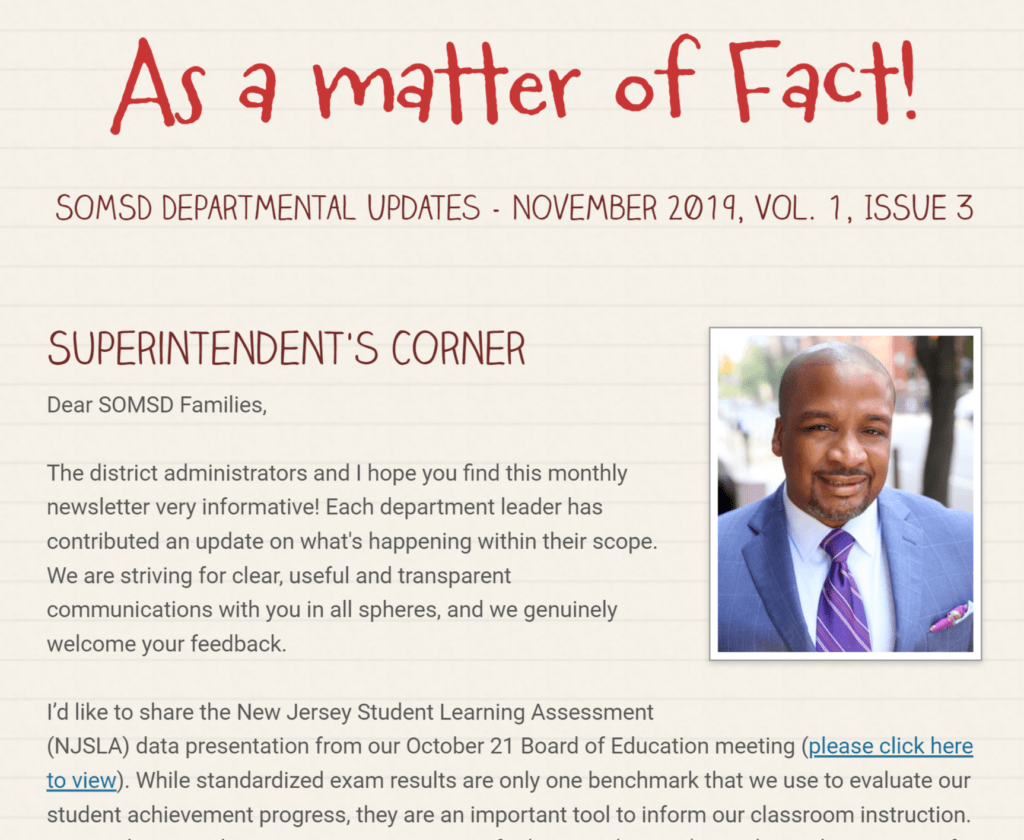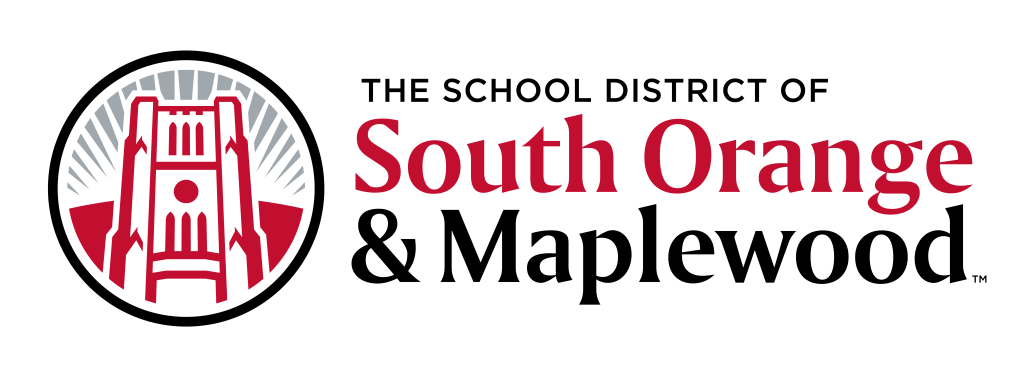The monthly South Orange Maplewood School District departmental newsletter is now available. Click here or on the picture below to view our monthly newsletter.
The monthly South Orange Maplewood School District departmental newsletter is now available. Click here or on the picture below to view our monthly newsletter.
Dear South Orange & Maplewood School District Family,
Our school district will begin using SchoolMessenger to deliver text messages to staff and parent mobile devices. In addition to robocalls and email notifications, text messages will now be used to send information about events, school closings, safety alerts and more.
In order to begin receiving text message notifications from the district, all staff and parents must opt-in to messaging services. Beginning on Thursday, December 19th (and throughout the remainder of the school year) the district will begin sending opt-in text messages to the phone numbers that we have on file.
In order to communicate with you through SchoolMessenger, it is important that we have the most up-to-date contact information available for all parties.
How do recipients “Opt-In” to receive text messages?
Recipients can opt-in by responding “Y” (or “Yes”), via to the opt-in message or by texting “Y” to 67587.
How do recipients opt-out of receiving text messages?
Recipients not wishing to receive text messages to a particular number can simply do one of the following:
I received a text message that says it’s from SchoolMessenger? What does it mean?
If it was from 67587, that was most likely the Opt-In Invitation message sent by School Messenger.
To continue receiving informational text messages from the school(s) reply with “Y”.
If you do not reply, you won’t receive any future texts from our schools.
I “Opted-In”, but I’m not receiving texts?
Ensure that the district has your correct mobile number. It may take 24 hours for a number to become active after being changed or added to the district’s system.
How do I know if it worked?
After you text one of the key words to the short code the system will ALWAYS respond back with one of three messages:
What does it mean if I texted “Y” or “yes” and I received some sort of error message back?
If you receive what appears to be an error message, similar to one of the following, it most likely means that short code text messaging is not enabled on your wireless subscription plan:
These replies DO NOT indicate that the wireless provider cannot receive messages from Communicate. Rather, they are an indication that the specific mobile device does not have short code SMS texting enabled for that number (this is sometimes disabled by default on company provided cell phones). To address this, contact your wireless provider.
Note: Providers sometimes use various names for this type of texting service (e.g. short code, SMS, premium, etc.). If you simply ask about text messaging, your carrier may assume you are referring to person-to-person. Therefore, be very clear to refer to “short code” text messages. Most TV programs that have a voting component use short code SMS messaging (e.g. American Idol, Dancing with the Stars). In addition, many department or grocery stores use SMS to distribute coupons and deals. Using an example such as this can be helpful in clarifying the type of texting service you want to enable.
Will I be charged for the text messages that I receive from School Messenger?
School Messenger does not charge recipients for the text messages that they receive or send to the short code; however, wireless providers may charge for individual text messages, depending on the plan associated with the wireless device. Please consult your carrier if you are uncertain.
The monthly South Orange Maplewood School District departmental newsletter is now available. Click here or on the picture below to view our monthly newsletter.

At a Board of Education meeting held on October 28th, Dr. Ronald Taylor presented the Spring 2019 New Jersey Student Learning Assessment (NJSLA) results. The presentation slides can be viewed by clicking on the link below.
|
11-04-2019 5:24 pm | Download |
The monthly South Orange Maplewood School District departmental newsletter is now available. Click here or on the picture below to view our monthly newsletter.

Three Columbia High School Students were recently named as semifinalist in the 65th annual National Merit Scholarship Program. Congratulations to Ryanne Barrett, Alexander Glynn, and Zubin Kremer Guha. Click here to view the Tap Into SOMA article regarding the National Merit Scholarship Program.
